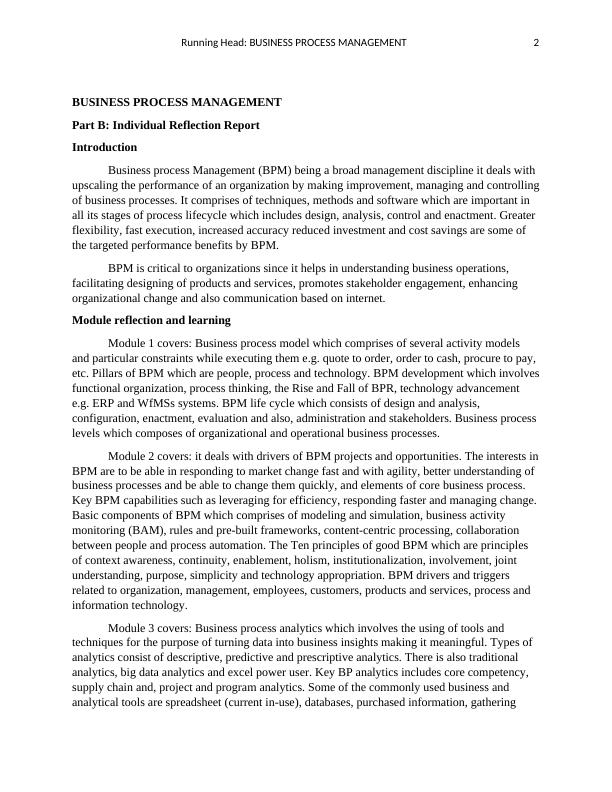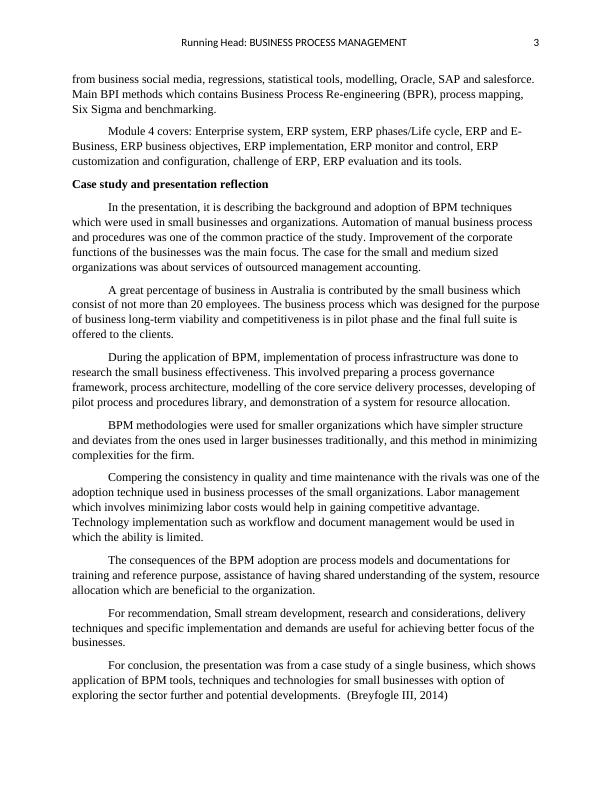Business Process Management: Reflection Report and Case Study
Analyzing the role and benefits of Business Process Management (BPM) in small businesses through a case study
Added on 2023-05-29
About This Document
This report discusses Business Process Management (BPM) and its application in small businesses through a reflection report and case study. It covers BPM methodologies, analytics, and enterprise systems. The report highlights the challenges, advantages, and errors minimized in BPM implementation. It also explores the benefits of BPM adoption, such as consistent quality, better labor management, and technology implementation.
Business Process Management: Reflection Report and Case Study
Analyzing the role and benefits of Business Process Management (BPM) in small businesses through a case study
Added on 2023-05-29
End of preview
Want to access all the pages? Upload your documents or become a member.



